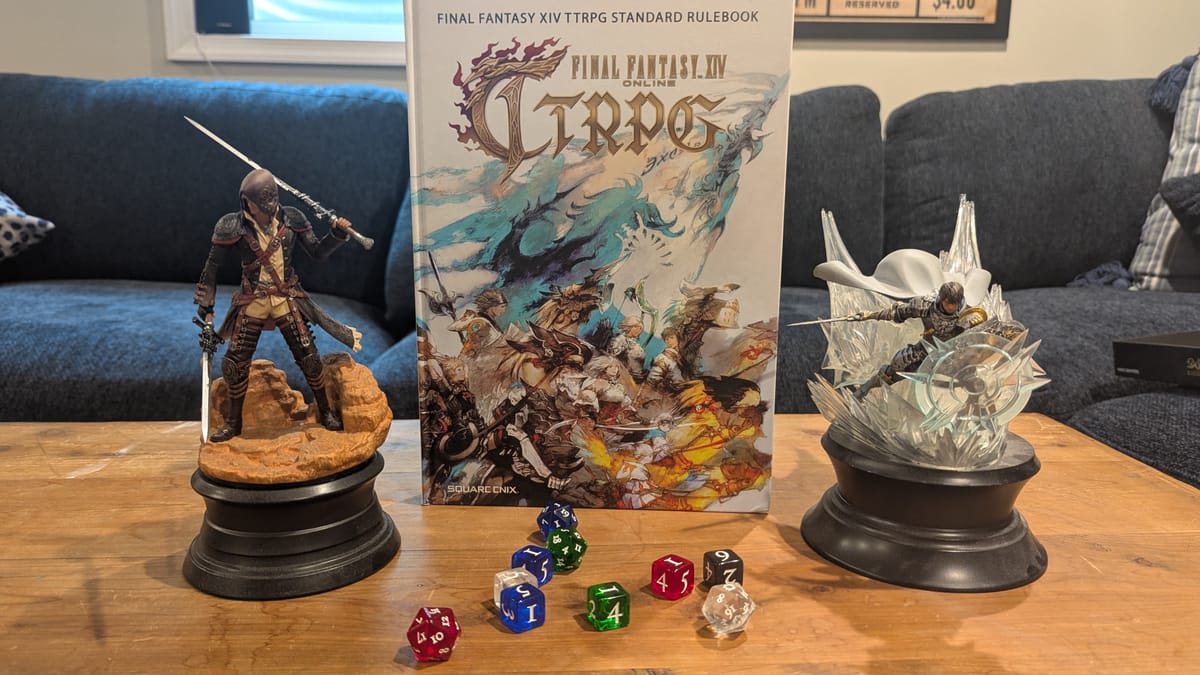
Last year’s starter set for the Final Fantasy XIV TTRPG offered a small taste of what the full game would be like. It gave you everything you needed to play, sure, but it didn’t quite have the information for players to make their own games and form a more diverse party (it only included 4 jobs and three adventures). Now, the Final Fantasy XIV TTRPG Standard Rulebook is here to set things more in stone; standardize them, you might say. This gorgeous 323 page hardcover book should cover everything you need or want to know about playing the game, from maps of locations like Ala Migho all the way down to the naming conventions of each race. While it covers everything found in the starter set and much more, the way the game is played does make this feel like an add-on to the starter set rather than something to be used on its own.
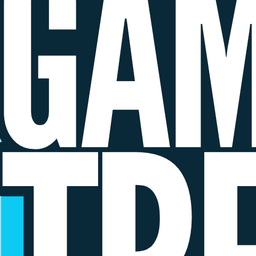 GamingTrendDavid Flynn
GamingTrendDavid Flynn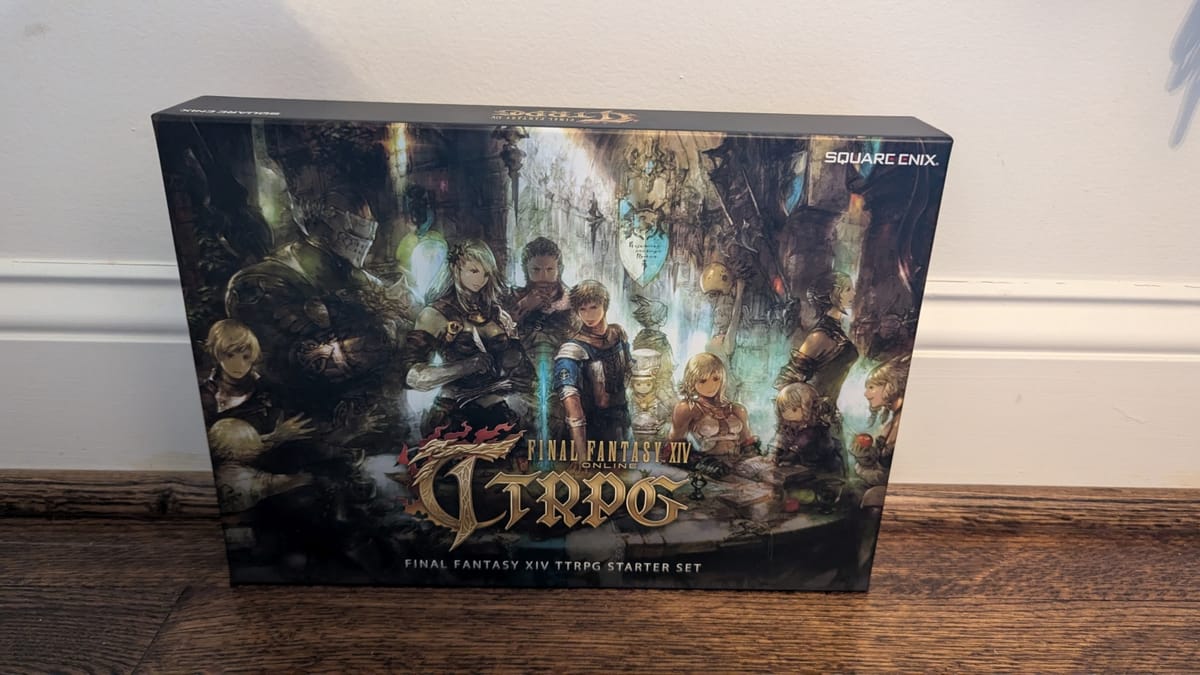
For a refresher on what the FFXIV TTRPG is and how it plays, you can check out my review of the starter set in the card above. As a quick rundown, the system here feels like a mix of the MMO’s gameplay and a more freeform tabletop RPG like Dungeons & Dragons. Players create characters of any of the game’s current races, and choose a job (which only goes up to Heavensward and can be changed at any time outside of combat simply by filling out another character sheet). Levels are a bit strange, at least compared to other TTRPGs. Players start at level 30, and can go up to level 60 in intervals of 10. There’s no experience points or anything, so presumably the players’ levels are determined by their current adventure or the GM’s discretion.
There are essentially three major modes of play. Roleplaying, in which the players embody their characters and interact with the world, checks where they use their strengths and skills to accomplish tasks, and combat. Combat is the most complicated, as it utilizes mechanics from the MMO. Battles take place on a grid, with each character taking up a square. Enemies can take up more than one square, though no two characters can occupy the same space. Similarly to D&D 4th Edition, players use skills to attack and help allies, with some skills even comboing together. What a player does in battle is largely determined by their job’s role, like White Mages heal, Dark Knights draw the enemy’s attention and take damage in place of the rest of the party with a mechanic called enmity, and Bards deal damage while providing support for the party.
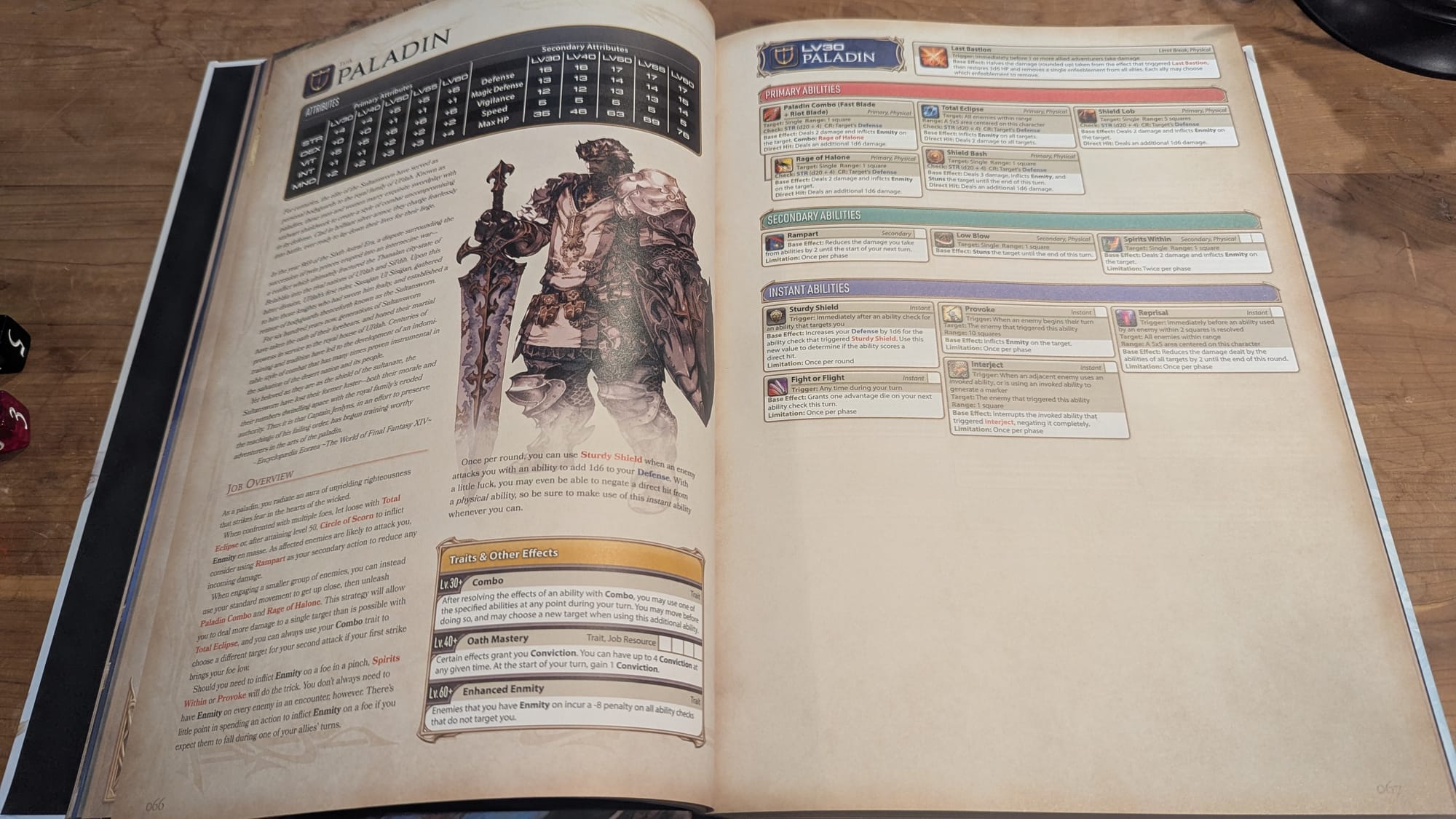
Enemies will attack the party, but also lay down Area of Effect attacks on the battlefield. These will go off after a certain amount of turns, so the party should focus on not being within the marked squares. It’s a really interesting way to translate the MMO’s mechanics into a tabletop game, though the translation isn’t perfect. Making all of this work does take a lot of, well, work. The starter set provides grids, tokens, and markers for its premade adventures, but if you don’t have those or want to create your own scenarios, you’ll need a digital solution or to make your own materials. I imagine a whiteboard and some colored markers would go a long way here.
There’s also just a lot to keep track of: enemy and player HP, turn order, skills and cooldowns, and more. This is a very mechanically dense game, even if many steps have been taken to streamline things. I can see a single combat going on for way longer than it should, however, especially when first learning the game. Some of the trackers and tokens from the starter set are included in the book here… but not in cardboard form or in any way tearable from the book without ruining it. If this is someone’s first TTRPG, which I imagine it very well could be, the standard rulebook also doesn’t come with dice or anything. This is very much supplemental to the starter set, despite the starter set not containing the full rules, for people who are going to be playing digitally, or for those who already have miniatures and markable grids.
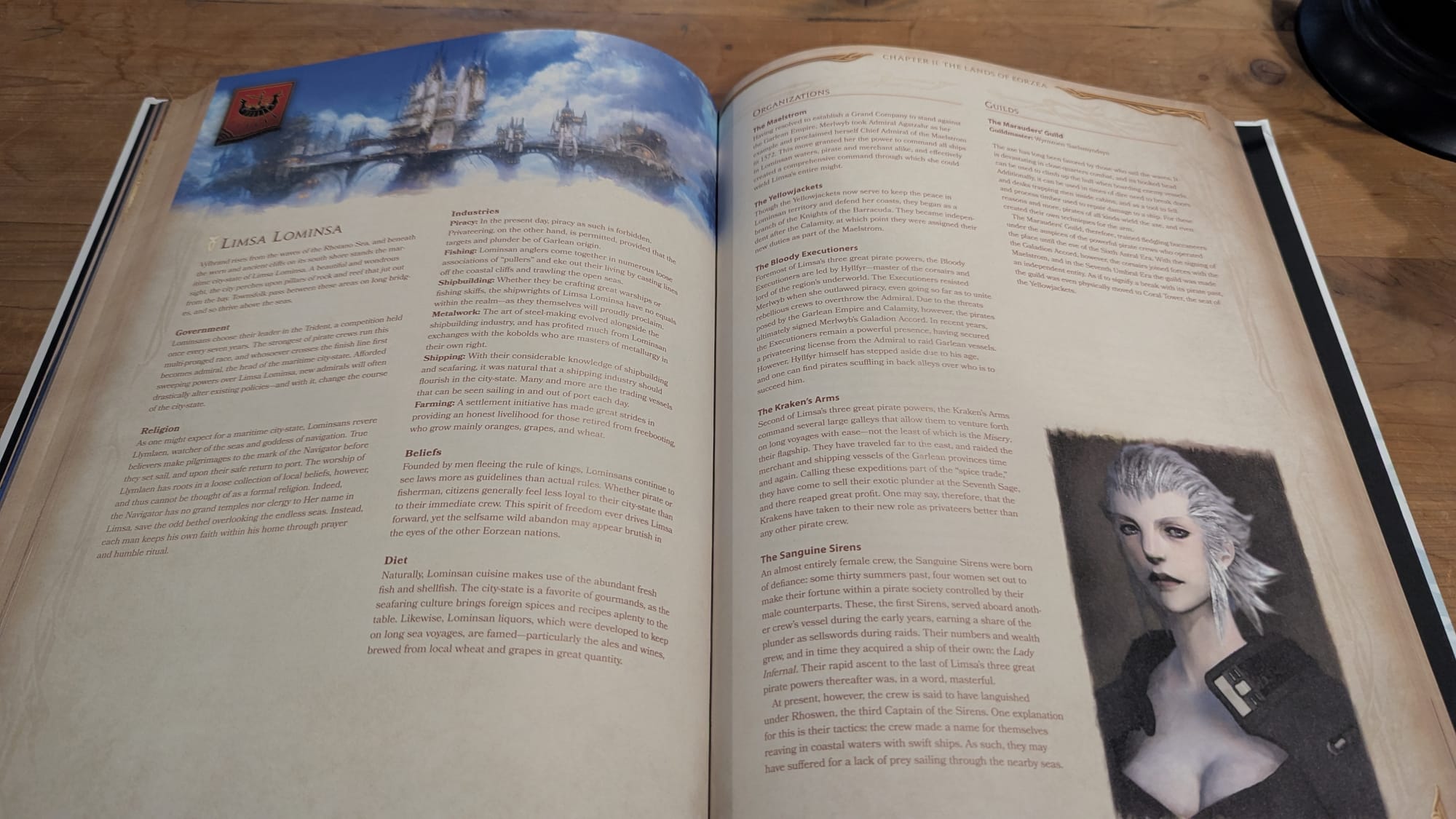
That said, this fills out the foundation of the game. It’s robust enough that players can make their own adventures, with plenty of wiggle room on the mechanics and world. In fact, the game encourages players to modify things to their liking or situation. It still wants you to follow the overall rules and lore, otherwise why even buy this book, but it encourages the GM to let mistakes slide and players to get creative with their characters. For example, in the MMO you change jobs using soul crystals, incredibly rare gems that impart the knowledge and techniques of whoever previously owned them to the current wielder. In character creation, the game tells players to perhaps find other reasons as to why their character is an expert in their job, like training or a special piece of equipment that functions like a soul crystal. The whole book does stuff like this, relieving a lot of the pressure that comes with learning a new system.
Final Fantasy XIV TTRPG Standard Rulebook
Great
The Final Fantasy XIV TTRPG Standard Rulebook fleshes out the rules described in the starter set with more jobs, locations, and adventures. It provides enough for GMs to create their own campaigns with enough wiggle room for creativity. It may not provide everything you need to play, but those who already have some materials will find a great basis here.
Pros
- Tons of Jobs and locations
- Useful for both players and GMs
- Leaves room for the imagination
Cons
- Requires additional materials to really work
- Combat has a lot to keep track of
This review is based on a retail copy provided by the publisher.
